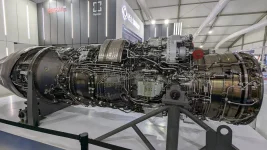- Views: 2K
- Replies: 13

India's Advanced Medium Combat Aircraft (AMCA) is not just another 5th generation fighter jet; it's being designed with an eye on the future, incorporating emerging technologies that place it firmly in the 5.5 generation category. But what exactly does that mean, and how does the AMCA aim to surpass its contemporaries?
While the concept of a 5.5 generation fighter isn't universally standardized, it generally refers to an aircraft that builds upon the core capabilities of 5th generation fighters while integrating select 6th generation technologies. This includes:
- Incremental Stealth Improvements: Going beyond basic stealth with features like adaptive materials that dynamically change radar absorbency or advanced methods to minimize infrared signatures.
- Enhanced Sensor Fusion: Incorporating artificial intelligence for superior data processing and potentially enabling autonomous decision-making in combat.
- Network-Centric Warfare: Expanding capabilities for data sharing with other platforms, including unmanned systems, for a more integrated battlespace.
- Directed Energy Weapons: Early integration of technologies like lasers for defensive or offensive purposes.
- Optionally Manned: The ability to operate with or without a pilot, leveraging AI for remote or autonomous missions.
Here's how the AMCA aims to surpass existing 5th generation fighters:
- Superior Stealth: The AMCA's design emphasizes all-aspect stealth, including rear-aspect stealth, using diverterless supersonic inlets and advanced materials. This potentially gives it an edge over jets like the F-35, which may lack comprehensive rear-aspect stealth in some variants.
- Payload and Flexibility: The AMCA features an internal weapons bay and offers greater flexibility in weapon loadouts, with significant internal fuel capacity and external payload options, providing operational versatility that could surpass the J-20, which has faced criticism for its payload limitations.
- Advanced Avionics: Incorporating an Active Electronically Scanned Array (AESA) radar with Gallium Nitride (GaN) technology, the AMCA aims for superior target detection and tracking. Its integration of AI for sensor and data management could provide decision support or even autonomous actions during combat, pushing the boundaries of current 5th generation capabilities.
- Engine Technology: The AMCA is planned with two engines, potentially offering greater power and reliability compared to single-engine designs in some 5th generation jets. The goal is to achieve supercruise, a feature not all 5th generation fighters possess.
- Cost-Effectiveness: As an indigenous development, the AMCA could benefit from lower maintenance and operational costs tailored to India's specific needs, unlike imported fighters that may incur higher long-term expenses.
- Future-Proofing: With the AMCA Mk2 slated to include 6th generation characteristics like swarm drone coordination and enhanced electronic warfare capabilities, it is designed as a platform that can evolve with technological advancements.





